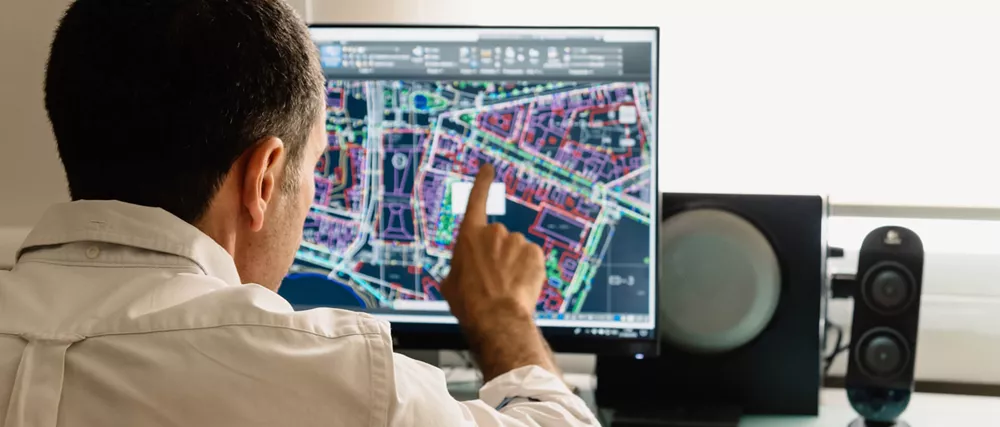There’s nothing like a crisis to focus the mind, and in the world of architecture the COVID-19 pandemic is throwing a sharp spotlight on innovation. Perhaps most obviously, we’re seeing commercial buildings being fitted with separators, shields and signage. These are all essential in holding busy offices and high street shops together at a time where we’re all being told to keep our distance. Those measures, critical as they are, are only the start, though. While much of the UK has been biding its time and waiting for the COVID-19 mess to blow over, some of the most innovative minds in business are worrying less about getting back to normal and focusing more on redefining what “normal” even means going forward.
The impact of social distancing is a much broader topic than simply shuffling the furniture around inside a building and throwing up a few cautionary signs. Around the world, we’re starting to realise that keeping each other at arm’s length is an obstacle to be faced in every walk of life. In Milan, architects and designers are being asked to step up to the challenge of re-imagining both indoor and outdoor spaces to accommodate the requirements of public safety. That challenge, naturally enough, covers more than just the raw necessities of maintaining social distancing. There’s also the delicate balance of both keeping those spaces functional and – equally importantly - meeting the socialising needs of the people using them. Ideas are being accepted and evaluated from a range of creative fields, along with traders and planners, to try to envision what a safe and practical “new normal” might look like.
In many cases, rather than a radical structural redesign, the solutions being developed are more about managing the ways people navigate commercial and communal spaces. Dutch studio Shift Architectural Urbanism has taken the conventional outdoor food market back to first principles with a system of “dispersed” sellers that thins out the concentration of customers and vendors in any specific area. Their “Hyperlocal Micro Markets” concept is essentially a grid of 16 squares that manages the flow of people and makes sure that social distance can be optimised. The idea is that these grids would be simple to establish in any public space, minimising the disruption while keeping people as safe as possible. Micro Markets would feature only 3 stalls across the grid, which is designed to accommodate a maximum of 6 people. Customers are limited to 1 per square at any time, and the items sold are packaged together to cut down on both the time taken to shop and the amount of handling the food gets.
Looking even more broadly, it’s clear that even the ways we travel to commercial and other spaces is in need of innovation. With people avoiding - or even being legally prevented from - packing themselves into public transport the way they used to, there’s likely to be a serious up-tick in road use on the horizon. That, in turn, is going the put a squeeze on both emergency services and the delivery systems we’re all increasingly relying on. With lockdown measures easing, the UK’s roads are already starting to fill back up. The challenge here is to present palatable, practical alternatives to using cars. Social distancing rules are slashing the capacity of public transport, so encouraging walking and bicycle looks like a strong move. Suggestions coming in range from adding temporary cycle lanes to roads to fully pedestrianising certain spaces. In addition to tackling some of the more difficult aspects of the current crisis, reducing our dependence on cars has the potential to address a range of broader practical, logistical and environmental issues.
With so much at stake, it’s invigorating to watch the ways the design and architectural communities are stepping up to the COVID-19 challenge. Innovation involves investment and, inevitably, risk. RIFT is proud to play its part in ensuring that the costs met and chances taken always pay off. R&D Tax Credits are custom-built to reward bold ideas and innovative thinking, so talk to RIFT about getting the credit you deserve.
Get credit for your future-proofing design and development innovations with research and development tax credit claim assistance from RIFT. Find out more about R&D tax credits for architects or contact RIFT R&D today to find out how we can help you maximise the benefits of new ideas.


Our technical teams specialise in hunting down all your qualifying R&D costs and turning them into a serious financial boost for your business.
Get in touch
